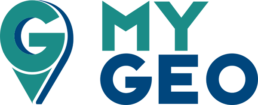Datasets regarding human trafficking are somewhat limited, making any recent literature or projects that incorporate GlS a bit uncommon.
According to the Migration Data Portal, current data sets that include information about human trafficking victims are limited in geographic scope and comprehensiveness, contain sensitive info about victims, and are difficult to make prevalence estimates with.
Although the safeguarding of heritage has always been a central concern of UNESCO, the focus on the use of modern electronic and computer-based information technologies to support this work is a relatively new initiative.
GIS-related Projects at UNESCO Bangkok
Over the past decade, the number of girls and women moving from Myanmar and China’s Yunnan province into Thailand’s sex industry has increased significantly. Lao PDR stands to become another supplier and transit point for entry into Thailand. In this trade of humans, minority women are disproportionately represented and vulnerable due to economic conditions, lack of rights and lack of awareness about trafficking issues. Such conditions allow trafficking networks easy access to highland communities as well as fluid, constant shifting from one spot to another to target victims. These constantly changing trafficking routes also facilitate the spread of HIV/AIDS infection, and make interventions more difficult to target.
In order to better inform intervention programme and assess their effectiveness, UNESCO initiated the Social Sentinel Surveillance Project, a GIS-linked system connecting databases with information related to the trade in girls and women from the upper Mekong subreigon into Thailand, rates of HIV/AIDS incidence, interventions and their coverage, and the distribution of at-risk populations (migration, population in sex work), so that different trends may be discovered, recorded and mapped.
All data generated through UNESCO research, together with data obtained from government agencies and NGOs, are incorporated into the GIS. They were developed into user-friendly products:
1. UNESCO GIS Maps Collection: The Trafficking and HIV/AIDS project focuses predominantly on the mapping of highland minorities in northern Thailand, including their migration and socio-economic conditions, the incidence of HIV/AIDS, and locations of sex venues in Thailand, including distribution, types and changes over time.
3. Capacity-building: a partnership with TPSO Zone 10
Credit: UNESCO

